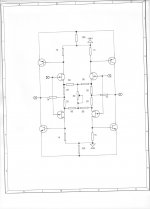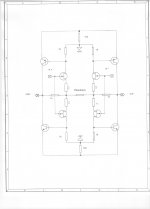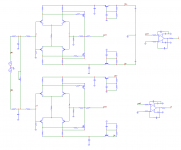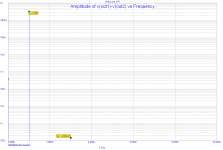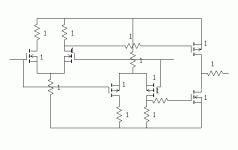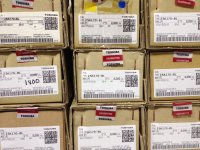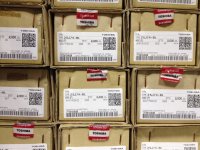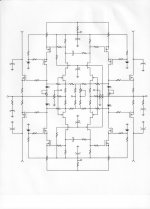This version incorporates adjustable input bias to allow for a greater range of jfet Idss. The pot can fine tune the second stage current accurately. This is close to perfect for typical Toshiba 'Blue' Jfets. Matching each pair for Idss is still mandatory.
Please note that the AUDIO PATH is still very simple. Just 2 to 2.5 active devices for the most part, yet you can have fully balanced in and out.
Last edited:
I also should be noted that this is a feedback amplifier. I normally use negative feedback in my designs, however, like PMA was implying earlier, open loop operation is also possible. I recommend feedback for most amateurs, although, all else being equal, open loop is usually better, but it is prone to excessive distortion if everything is not perfectly selected and matched. Charles Hansen never uses loop feedback as far as I know, for example. And the CTC Blowtorch is open loop as well, BUT we both use a similiar, but an even more sophisticated topology to improve the open loop distortion and reduce the open loop gain intrinsically, rather than 'throw it away' with either source degeneration (noisy) or with extra output loading (added distortion). But let's stay with the feedback versions at the moment. They are still viable to get 'rave reviews' in the audio scene.
Please note that the AUDIO PATH is still very simple. Just 2 to 2.5 active devices for the most part, yet you can have fully balanced in and out.
😎🙂
-RM
Let us not confuse the situation PMA. There are lots of permutations and combinations that are possible and even practical, but first things first.
This was built, as a real thing, based on your topologies. It is not a 4Q, but is also balanced.
Attachments
This was built, as a real thing,
....and it has quite interesting distortion profile.
Attachments
....and it has quite interesting distortion profile.
I guess i need a bigger screen ....🙂
Like these John? Nice circuitry.
Show off ... 🙂
Like these John? Nice circuitry.
😱
No wonder Linear System delaying LSJ74
Didiet
so THAT'S where all the JFETs went ...
😀
mlloyd1
😀
mlloyd1
Like these John? Nice circuitry.
This is still the same topology that I have been describing but with all fet (both jfet and mosfet) design with lots of CASCODING for better performance in some areas. In reality, all these extra parts could be eliminated IF the real world parts were virtually perfect, but they are not, so the cascodes both linearize the primary device and they allow higher voltage power supplies, such as +/- 30 to 50V. The final design would have even more parts, just to make the unit commercially practical.
Last edited:
Look-a-like
Harris HA-2539 from the year 1989? 🙂
1 ping only...
2'nd try
Harris HA-2539 from the year 1989? 🙂
1 ping only...
Attachments
- Status
- Not open for further replies.
- Home
- Member Areas
- The Lounge
- John Curl's Blowtorch preamplifier part II
